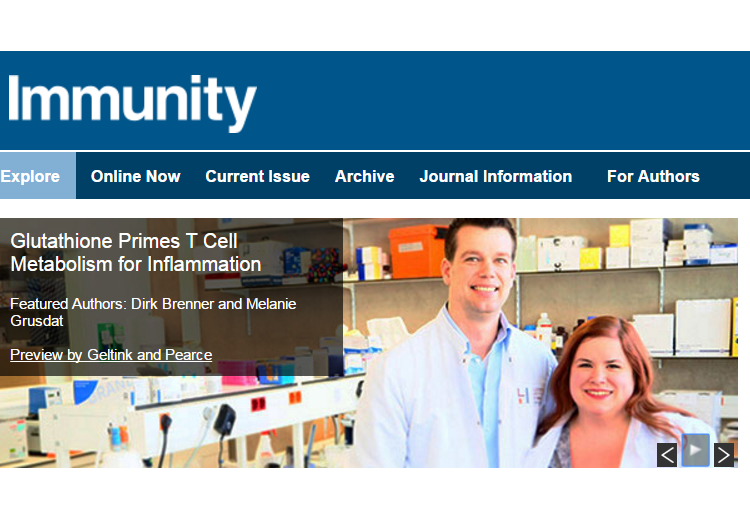A team of researchers at the Luxembourg Institute of Health (LIH), including AFR PhD Antoun Al Absi, have uncovered that breast cancer cells use a molecular shield to protect themselves against the immune system, a discovery which could help pave the way for new cancer treatment options.
Cancer cells have evolved multiple escape strategies to circumvent the body’s immune defences such as the attack by Natural Killer (NK) cells, which normally swiftly kill abnormal cells by releasing cytotoxic products.
While studying breast cancer cell lines, Dr Clément Thomas’ research team at LIH uncovered a previously unknown mechanism that leaves tumour cells unharmed by NK cell-mediated cytotoxicity. The scientists published their findings in the August issue of the acclaimed scientific journal “Cancer Research”.
The actin cytoskeleton is essential for maintaining the shape of cells and enabling motility, and plays critical roles in tumour cell invasion and metastasis. Until now it remained unclear whether the cytoskeleton also contributes to immune evasion, rendering cancer cells resistant to attacks by the immune system.

Actin mounts up in resistant tumour cells
Cancer cells are able to develop resistance to immune attack by escaping from NK-mediated cell death. Tumour immune escape is a major hurdle limiting the efficacy of current immunotherapies.
In the present research work, Dr Antoun Al Absi, Dr Thomas and co-workers investigated whether the actin cytoskeleton plays a role in immune evasion.
The scientists thus took a closer look at possible alterations of the actin cytoskeleton in breast cancer cells, comparing NK-mediated cytotoxicity resistant and susceptible cell lines. They revealed that all the cell lines they investigated contain two subpopulations: one showing a very prominent accumulation of actin filaments at the level of the immunological synapse, and one with no such accumulation.
‘When using high-throughput imaging flow cytometry we observed that actin massively concentrates at the immunological synapse in tumour cells resistant to NK cytotoxicity, indicating a causal link between this actin response and resistance,’ states Dr Al Absi who conducted the major part of the experimental work.
Actin(g) as a protection
To be sure that the actin response is truly associated to the resistance phenotype, the researchers conducted experiments in which genes were silenced to impair actin polymerisation. This abolished the actin response and made previously resistant cancer cells remarkably more susceptible to NK cell attack. Thus the actin response is linked to the protection of cancer cells against the attack of NK cells.
Finally, to validate their results, Dr Al Absi and co-workers also monitored the actin response using primary NK cells isolated from donors to exclude that the phenomenon is solely observable with the NK cell line initially used for the study. Indeed, the actin response and its protective effects were also observed in this context.
The present research work revealed a new fascinating mechanism by which cancer cells escape from the immune response and may pave the way for new cancer treatment options.

Research funding and collaborations
This research work is a major part of the PhD thesis of Dr Antoun Al Absi who graduated in July 2018 and was supported by an AFR PhD grant from the FNR. The research team is supported by further research grants from the FNR, F.R.S.-FNRS Télévie and Fondation Cancer.
The project was mainly carried out at the Laboratory of Experimental Cancer Research at LIH’s Department of Oncology under the lead of Dr Clément Thomas and included a collaboration with the National Cytometry Platform at LIH’s Department of Infection and Immunity and the INSERM unit “Immunologie Intégrative des Tumeurs” at the Gustave Roussy Institute in Villejuif, France.
More information
Link to publication ‘Actin Cytoskeleton Remodeling Drives Breast Cancer Cell Escape from Natural Killer-Mediated Cytotoxicity’
Read about this research in more detail on the Luxembourg Institute of Health (LIH) website






















